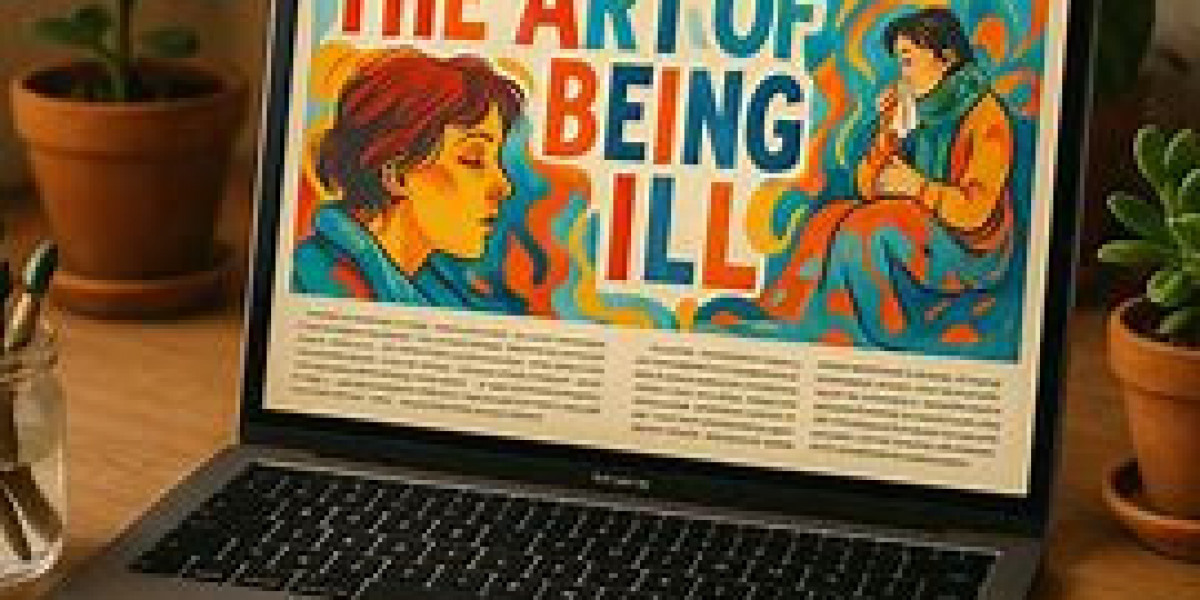Introduction
Illness is a universal experience. At some point, everyone encounters times when the body demands rest and the mind struggles to stay patient. Although sickness is rarely welcome, it can provide an unexpected opportunity—a chance to slow down, reassess priorities, and reconnect with oneself.
The art of being ill is the practice of approaching these moments with intention, patience, and compassion. Rather than viewing sickness solely as an obstacle, this perspective transforms it into a period of learning, self-care, and emotional reflection.
1. Acceptance: The First Step
The foundation of the art of being ill is acceptance. In a culture that prizes productivity and strength, slowing down can feel like failure. Many people resist resting, feeling guilt or frustration for stepping away from their responsibilities.
Acceptance does not mean surrender. It means acknowledging limitations without judgment. Recognizing illness allows stress to diminish and the body to focus on healing. Acceptance creates the mental space needed for both physical and emotional recovery.
2. Rest as a Form of Healing
Rest is essential but often underestimated in everyday life. Many people see downtime as wasted, rather than a critical part of the healing process.
The art of being ill reframes rest as active healing. Sleep, quiet reflection, and relaxation support the immune system, restore energy, and promote emotional well-being. Rest is an intentional act of self-care, not a passive indulgence.
3. Listening to Your Body
Illness communicates important signals about the body’s needs. Fatigue, pain, or discomfort are indicators that attention is required. Ignoring these signals can worsen health and delay recovery.
The art of being ill involves attentive listening. Observing how your body responds to rest, nutrition, and care enhances self-awareness. This mindful approach fosters long-term wellness and strengthens the connection between mind and body.
4. Emotional Awareness
Sickness often brings emotional challenges such as irritability, anxiety, or sadness. Suppressing these feelings can hinder recovery and create unnecessary stress.
The art of being ill emphasizes nurturing emotional health alongside physical recovery. Journaling, meditation, mindfulness, or speaking with trusted friends provides an outlet for emotions. Emotional awareness strengthens resilience and enhances the overall healing process.
5. Slowing Down for Reflection
Periods of illness naturally slow the pace of life. While inconvenient, this pause offers a unique opportunity for self-reflection.
The art of being ill encourages asking meaningful questions:
Are my habits and routines supportive of my well-being?
What changes can I make to improve my health and lifestyle?
How can I nurture myself more effectively moving forward?
Reflection allows sickness to become a teacher rather than a disruption.
6. Strengthening Relationships
Illness often underscores the importance of human connection. Accepting support—from meals to emotional check-ins—can deepen bonds and foster gratitude.
The art of being ill teaches that vulnerability strengthens relationships. Expressing needs and showing appreciation builds trust and reminds us that healing is often a shared journey.
7. Holistic Healing Practices
Medical care is vital, but holistic approaches enhance recovery and well-being.
The art of being ill incorporates:
Balanced nutrition and adequate hydration.
Gentle movement such as stretching or light walks.
Mindfulness practices, meditation, or creative activities to calm the mind.
Creating a restful environment to support mental health.
Combining conventional treatment with holistic practices ensures comprehensive and sustainable healing.
8. Learning From Illness
Sickness can teach lessons that health cannot. It encourages patience, self-compassion, and mindfulness while revealing imbalances in lifestyle, work, or relationships.
Embracing the art of being ill allows these lessons to guide long-term personal growth. Individuals who consciously approach sickness often develop empathy, resilience, and a deeper understanding of their physical and emotional needs.
9. Practical Tips to Embrace the Art of Being Ill
To fully embrace the art of being ill, consider the following steps:
Acknowledge your condition without guilt or denial.
Prioritize rest, nutrition, and hydration to support recovery.
Simplify routines to conserve energy for healing.
Seek emotional support from trusted friends, family, or professionals.
Reflect on lessons learned and integrate them into daily life.
These practices transform sickness from a passive experience into an intentional, restorative period.
10. Carrying Lessons Beyond Illness
The insights gained during periods of sickness often extend beyond recovery. People frequently develop:
Stronger awareness of physical and emotional limits.
Healthier routines surrounding rest, nutrition, and exercise.
Increased patience, empathy, and resilience.
The art of being ill allows sickness to serve as a lifelong teacher, guiding mindful, intentional living even after health is restored.
Conclusion
Although illness is rarely welcome, it provides opportunities for reflection, self-care, and personal growth. The art of being ill teaches acceptance, patience, and the value of holistic practices.
By listening to the body, nurturing emotions, and embracing vulnerability, sickness transforms into a meaningful journey. In this process, we emerge stronger, wiser, and more connected to our well-being, ready to live with mindfulness and compassion.








